Last time I spoke with Rob Reiner, albeit briefly, was during the 2017 TCM Classic Film Festival when he and his father, Carl Reiner, had their hand and footprints cemented outside the Chinese Theatre. A whirlwind day, Reiner was, as always, enthusiastic and smiling. The first father-son duo to hold such an honor, Reiner still recalls his thoughts at the time. “That was a really great day. The next day it hit me more than the first day. I was like, ‘Wow, this is really cool.’ It was strange. It was just weird. And you know, the camera’s there and everything. It’s kind of like you don’t really take it in. The next day it was like, ‘Oh my God! Me and my dad! They’re [the prints] there!’ And our stars on the Walk of Fame are right next to each other, too. So that’s cool, too.”

Something else that’s “cool” is Rob Reiner’s work as a director and his latest film, LBJ, just further cements him as one of the great directors of our time. With script by Joey Hartstone and starring Woody Harrelson in the title role, LBJ is an eye-opening and sensitive look at a man who looked everyone in the eye and fought with conviction and respect to hold a nation together and forge a path of unity and legislative progress. Honing in on a very specific period of time in LBJ’s history – the time frame encompassing the landing of the Kennedys at Love Field in Dallas to Johnson’s civil rights address before the Joint Session of Congress – Reiner views this story through this narrow lens of a character revealing, stressful situation where LBJ assumes the burden of the presidency, speaking volumes as to the character of the man himself. A more timely and telling film could not be had in this particular moment in time given the socio-political state of the United States today. A more emotionally satisfying look at the private workings of a public figure in a most challenging situation would be hard-pressed to find.
During this exclusive interview, Rob Reiner spoke in-depth about the making of LBJ, starting with the Oscar-worthy performance by Woody Harrelson.
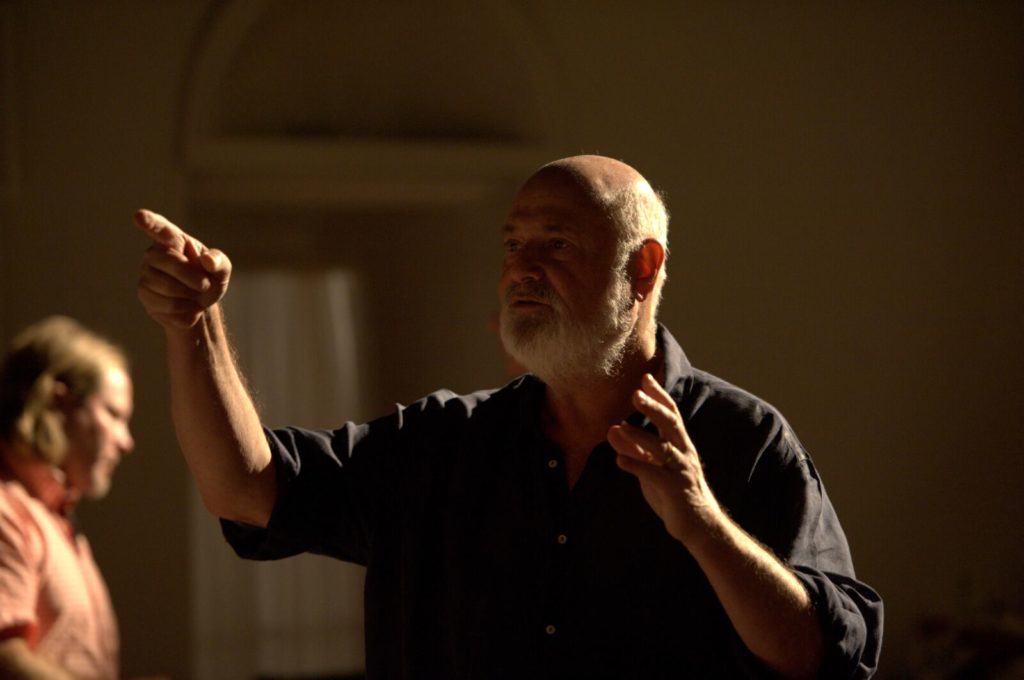
Rob, this film is phenomenal. Number one, hand Woody the Oscar right now for Best Actor.
RR: Boy, I really hope he gets nominated, because he’s had an incredible career of so many varied performances, and he just knocks it out of the park with this thing. I mean, it’s just extraordinary, so I hope you’re right. I hope he does get nominated.
His performance is amazing, and I know much of that is you working with him and shepherding him to being LBJ.
RR: We worked pretty close on it. He’s got the greatest instincts, and I can tell you that the reason I wanted him. And it’s so funny because whenever I tell people, they’ll say, “What’s your next movie coming out?” and I say, “I made this movie ‘LBJ'” and they say, “Well, who plays LBJ?” and I say, “Woody Harrelson,” their first reaction is Woody Harrelson, LBJ? They don’t put that together. They can’t imagine that. And then I say, “Wait till you see the film. Wait till you see what he was able to do with it,” because the reason I wanted him was because we were trying to get a full three-dimensional portrait of who Lyndon Johnson was.
Everybody has this image of LBJ as being this kind of very tough, bull in the china shop, arm-twisting guy who browbeat people to get his own way, but there was a very insecure side to him. He felt, at times, not loved, he felt so insecure that it almost paralyzed his ability to make a decision, and so with Woody I knew I can get all of those aspects of him, not just the strength of LBJ but also the vulnerability, the sensitivity, and also sense of humor. LBJ had a sense of humor, and we try to bring that out in the film. And he’s also from Texas, so to me he was like the perfect guy. Like I say, for people who haven’t seen it, wait till you see it. You won’t believe it.
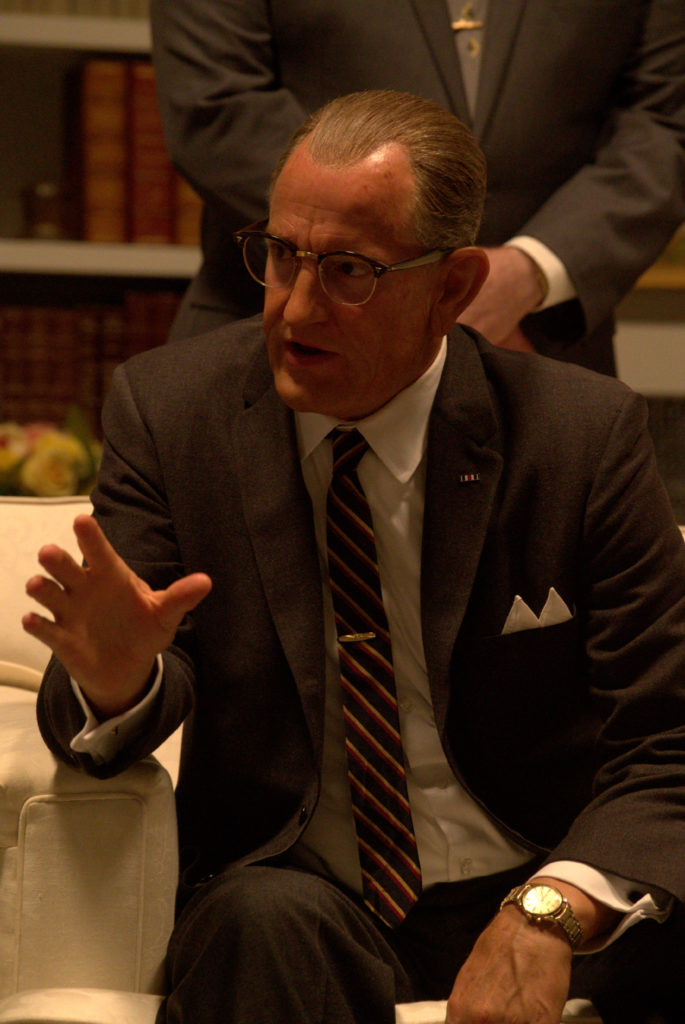
You really bring the human element to LBJ, and we see a full-bodied portrayal, and how you work with compromise and persuasiveness, and his stick-to-it-iveness. It’s all well-crafted with this great compassion. A lot of people may miss some of Hartstone’s great dialogue that he wrote, such as after JFK dies and we’ve got LBJ in the whirlwind in the kitchen with Markowitz’s camera going around in almost a 360, as you hear him saying, “Lady Bird, get me the good stationery, I have to write a note to Caroline and to John-John.”
RR: Right, right. And that whole sequence there, that wasn’t in there initially and we said we’ve gotta show what he did the night he arrived back in DC after the assassination. So we started listening to all the tapes and things and who he talked to. We know he talked to all the presidents, Truman and Eisenhower, and he talked to J. Edgar Hoover. So we tried to put together a montage of those conversations. We just picked and chose from various tapes that we heard of him and were putting that together.
The other thing about LBJ that people don’t know is he worked so hard. When I was preparing “The American President”, I looked through all of the schedules of all the different presidents. You can get them through Freedom of Information Act, and I looked back from Eisenhower on, and nobody came close to LBJ in terms of how hard he worked. If you looked at a schedule, he would sleep three, four hours a night. He’d be on the phone three o’clock in the morning to people. As we describe in the film, he’s a workhorse. He was a workhorse, and he knew that the only way he would be appreciated or loved, which is what he was looking for, is that he could get results, that he could get things done, because he knew he wasn’t the handsome Kennedy, he wasn’t the sex appeal guy that everybody looked at with Kennedy. So he had to prove himself through his abilities, and so he worked so hard to make that happen.
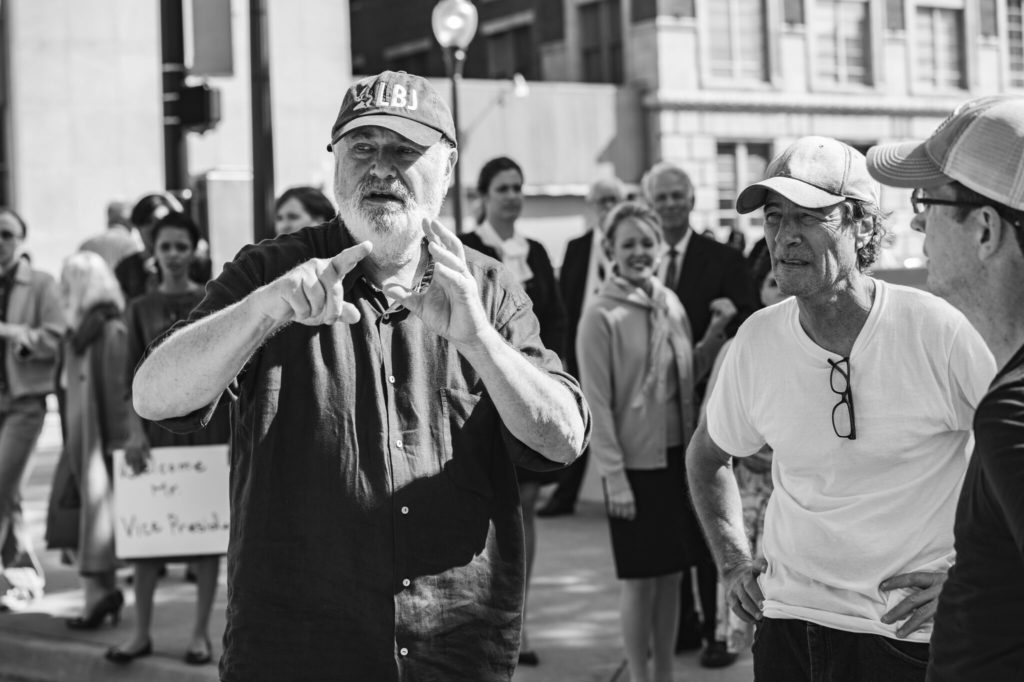
You really do bring that forward, and you really convey that. Something else that you also bring to light that I think a lot of people overlooked and to this day are still mystified by, is why JFK picked him as a running mate. You really clarify and give us a history lesson with so much of this film. It’s also a very tacit commentary on how politics is playing out today. The respect that you have within this film on every level, even when people are at odds, shows a mutual level of respect that comes through.
RR: Right. That kind of decency and respect seems to have disappeared a while ago, and with the current president, I think you can put the last nail in the coffin on that one because there’s just absolutely no honest discourse in Washington anymore. It’s a shame. And that’s one of the reasons why I think people, when they see this film, they’ll appreciate it because they’ll see this is the way government should run, this is how a president’s supposed to act, and this is the way government is supposed to run. I mean, you have a man who understood in his bones the nexus between policy, politics, and government. He understood how all those things intertwined, and because of that he was able to move an agenda forward. If you don’t understand that you cannot move an agenda forward. We see what’s happening now with a president who not only doesn’t understand how government works, he doesn’t want to take the time to learn.
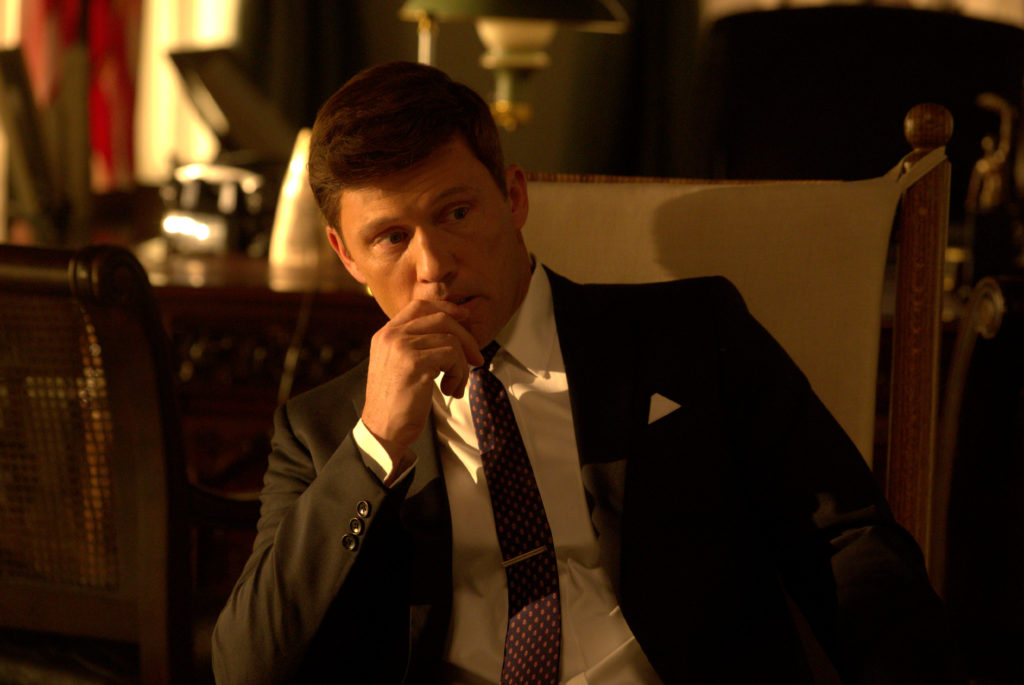
Yes. That’s the worst part. I’m curious, Rob, what led you specifically to this project? And I’m also curious why you focused on the transition period and the follow-through with LBJ continuing and seeing to fruition JFK’s civil rights agenda, whereas Medicare/Medicaid is really LBJ’s legacy.
Yes, but also the Voting Rights Act. In ’65, he passed the Voting Rights Act as well. But you’re right, the legislative achievements of LBJ are second only to FDR in terms of success and what he was able to accomplish. But the reason I decided to do this movie, that’s the best question, because during the Vietnam War, I was of draft age, so I hated him. He was my enemy. I was against the war, I marched in protest, and this is a guy, I could get drafted, he could send me to my death. So I didn’t like him, and that’s all I thought about him. I didn’t think about anything else.
I was looking at him through that prism as a young person, but as I got older and matured and spent time in politics and helping craft policy and actually having a job in government, which I had for seven years in California, I got to understand how incredible his achievements were and what he was able to accomplish. It made me think about him in a different way. Vietnam, you can’t take it away, but had it not been for Vietnam he would have gone down as one of the great presidents of all time. So in approaching this, I said, “I want to take a look. Who is this guy? I know he escalated the war in Vietnam and I know about his legislative achievements, but who was the guy? Who was the guy at the center of all this?”
And in doing the research, reading the [Robert] Caro books, but then also reading the Doris Kearns Goodwin book, that’s where I got most of the personal insight. There were a couple things I teased out of it. One is that he had this recurring dream of being paralyzed. And I thought wow, that’s interesting. Here’s this guy who’s so highly functional, he’s feeling paralyzed? And then I read about his relationship to his mother, and she withheld her love at times, and he felt that she didn’t love him at times. It was a conditional kind of love where she only would give him her love when he was doing what she wanted him to do. I thought that’s interesting. Here’s a guy who is made so insecure and it ultimately, at times, paralyzes his ability to make a decision.
And then the idea of selecting that narrow slice of time between . . . Basically, the whole picture in real time takes place between the time Kennedy lands at Love Field and the time that Johnson delivers the very famous speech in front of the Joint Session of Congress about civil rights. That was a time in which he has to take on the burden of becoming president, and I thought the best way to examine a person’s character is to put him in the most stressful situation and then see who that person is. So that’s why we selected that time, and that’s why we decided to do it.
If you wanted to do a biography of Lyndon Johnson, you’re going to need 10, 12 hours of showing his entire life, but I wanted to try to get to the essence of who this guy was.

And you do it so well. I’ve got to ask you about working with Barry Markowitz as your cinematographer and the visual tonal bandwidth that the two of you create in this film because it’s very traditional lensing. You’ve got your two-three-four shots, but what you do with the lighting and the framing – your lighting mirrors the harshness of situations. I take a look at his first meeting as Vice President where Kennedy appointed him to head the one committee, and nobody shows up but for underlings. And you’ve got sunlight streaming through windows, blasting in his face, that shows this harsh light of the situation at hand. Your metaphor is beautiful. Then we have the more golden tones in his residence in Washington, with the kitchen and the bedroom. And then you move into your framing. You make very judicious use of your extreme close-ups, and you pretty much hone in on your basic two and three shots until we get more people in the room. What were the considerations and influences that you and Barry had to come up with this visual design?
RR: That first scene that you talked about, there’s a big harsh light on Johnson, and then everybody else is kind of in the shadows, if you noticed. There are a lot of people, all these underlings who are not the real [appointees]. He’s not with his peers and he stands apart. That was the idea there. But to be honest with you, Barry and I, we’ve done now three movies together, and we get along great. He works as fast as I work. He uses available light. We try to find the light that will work for the scene. There’s hardly any additional lights. We try to use the light that we find. Of course, when we’re in the Oval Office, that was a set and that was interior, and we try to change up the light based on if it’s a morning, it’s the afternoon, it’s at day, it’s at nighttime, to give it some variation, but for the most part we’re trying to use the available light, and when a scene calls for a certain emphasis you jam in a little extra there for what you need.
But I love working with Barry, because we both work fast together. I’ll give you an example. We had Dealey Plaza. We shot the recreation of the assassination at Dealey Plaza. We only had six hours. The mayor said you can have six hours because they didn’t want to tie traffic up in Dallas for that long. So Barry and I went out there and we scouted. We went and detailed scouting. We had four cameras and we put the cameras where we knew we’d need a shot. We had like 12 positions, but if I could have the motorcade circle around and we had a route where we could bring them back around, I could then replace the cameras, so I had 12 angles that I could shoot. We shot it within four hours. We had everything we wanted.
So it’s planning all that and knowing how to do it. With one of the cameras, I dressed the guy up as Abraham Zapruder, who shot the Zapruder film, and I gave him a camera, so there are some shots, if you remember when Kennedy comes out from behind the street sign and he’s holding his neck, that was a recreation of a shot you see in the Zapruder film. I like working with Barry because we work very fast together, we’re on the same wavelength, and it’s been the best collaboration I’ve ever had.
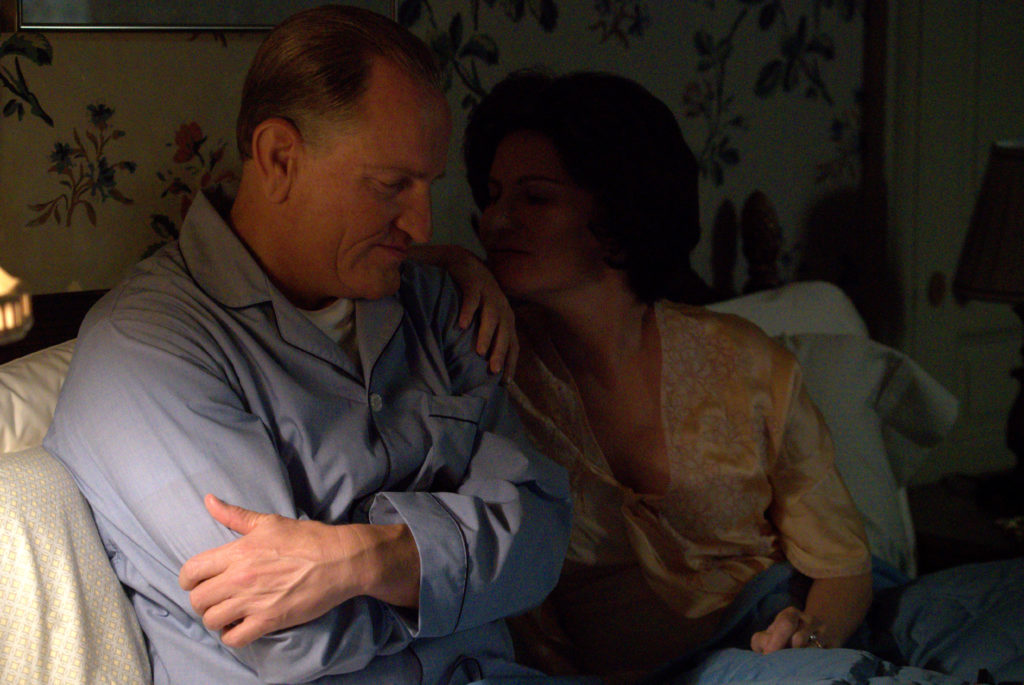
Did you shoot with anamorphics?
RR: No, no, no. This was shot with all digital. We shot the Alexa with Panavision [Pvintage] lenses.
Your whole look is very period-perfect.
RR: Thanks. That’s the other thing we did. We tried, in the color scheme, whenever we’re flashing back to Kennedy it’s a little bit more sepia to give it a little bit of difference from the reality of when he becomes Vice President. It’s all in this kind of short period of time, but we tried to vary it in that way.

You did a beautiful job. I have to ask you because you’re re-teaming with Joey Hartstone for “Shock And Awe”, what is the magic of this collaboration, and what is it about exploring the presidency and the Oval Office that appeals to you?
RR: In “Shock And Awe”, it’s more about the run-up to the war in Iraq, and it’s about these four journalists who got the story right and couldn’t break through the propaganda and the smoke of the Bush administration. That was based on that, it wasn’t really about the presidency. This one is about the presidency, and I thought there have been so many great movies. There’s “Lincoln”, there have been movies about Nixon, the ones that you think are the obvious dramatic where big historical events happened during their presidency, and there have been a lot of movies made about Vietnam. But this character to me is interesting, Lyndon Johnson, because he’s so complex. He’s Shakespearian. It’s like a tale of two presidencies, you know? He’s got the Vietnam War, which he’ll always be remembered for, and he’s got this incredible domestic legislative achievement. There’s a line in the movie where Richard Russell says to him, “You’re going to be remembered for this [the Civil Rights Act], your whole presidency,” and he says, “I can only hope.” And it’s interesting because he’s not remembered just for that. He’s remembered mostly for the Vietnam War.
And that’s a sad commentary.
RR: Yeah. Well, hopefully, people are going to see him in a different light. They’re going to see a more full-rounded picture of him because the movie ends in 1963, and the war hadn’t even started to being escalated at that point.
I hope everyone sees this movie because it is a piece of history that, in this day and age, couldn’t be more timely and topical.
RR: Well, thank you, Debbie. I really appreciate what you’re saying. Hopefully, people will see it and see how government should run.
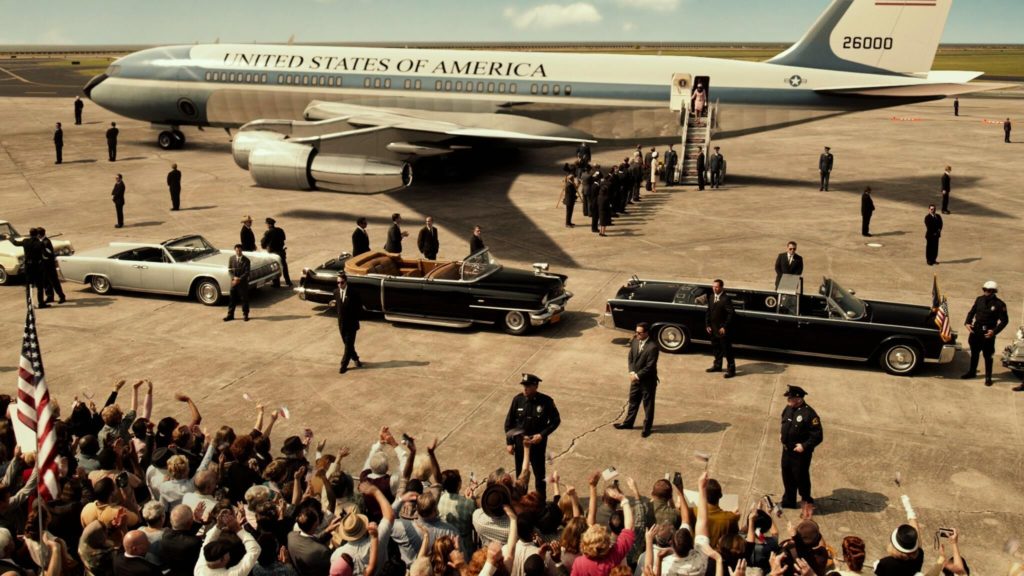
One more question before I let you go, Rob. What did you personally take away from the experience of making this film that you can now take forward with you?
RR: The one thing that has been totally surprising to me is the lens in which you view something. There are films that you see when you’re young that you loved, and those films either, when you get older you go, “What was I thinking? That’s a dopey film,” or they get better. You even appreciate them more because of your maturity, you bring that to watching the film. This film took place over a period of time in terms of when we finished it and when we’re releasing it, and I had a certain view of this film that is changed now because of the landscape having shifted. And I know for me, there are certain films like “It’s a Wonderful Life” – I love that film – and as I’ve gotten older and appreciated life more, that film took on more meaning for me. All of a sudden, this film … and I didn’t even change a frame … took on more meaning for me. So that was a strange kind of experience for me.
debbie elias, exclusive interview, 10/26/2017












